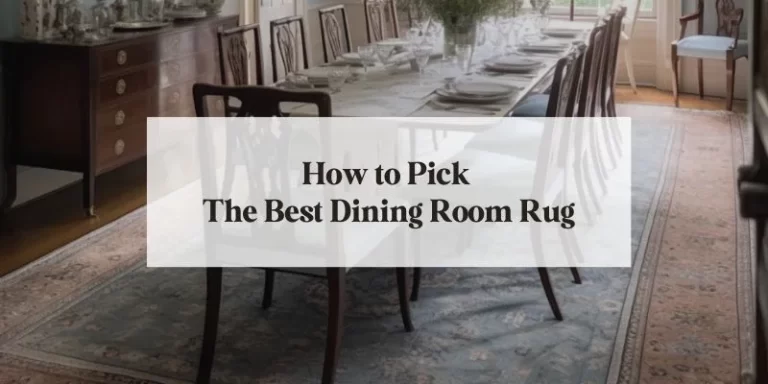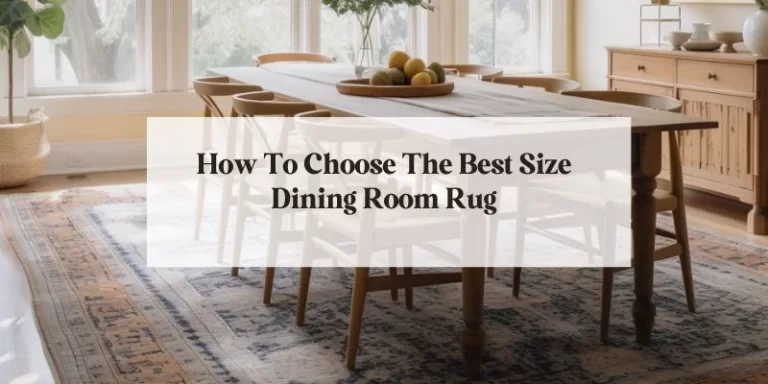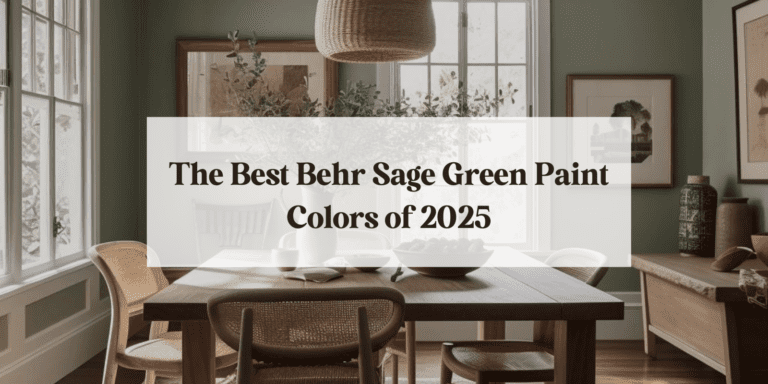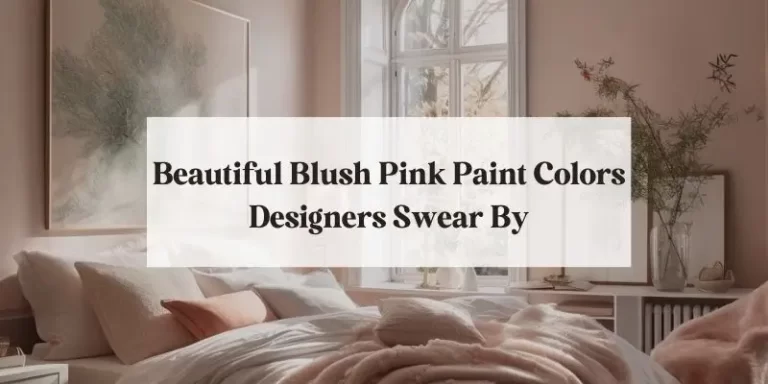Why It’s Important to Pick The Right Dining Room Color
If you’re wondering how to pick the correct color for your dining room, you have come to the right place! We’re going to walk you through 5 simple steps to correctly choose the best paint color for your dining room.
Look, I get it. Choosing a paint color ain’t easy. If it was, interior designers would be out of a job. You certainly want to avoid the headache of having to repaint your room. It’s easy to get stuck in overwhelm or analysis paralysis. But with this tried and tested color process, you’ll be picking colors like a pro.
In the early years of my career before I became an interior designer, I worked as a specialty faux finisher and muralist in Dallas, Texas. I have painted hundreds of gorgeous homes, walls, cabinetry, furniture, and ceilings.
I have custom mixed paint to match complex wall and cabinetry finishes, stones, marbles, and more for a seamless, beautiful look. Color matching is my thing y’all. I’m going to share with you pro tips I’ve learned the hard way from years of experience so you can choose the right color, the first time.
Whether you’re doing a pre-holiday refresh, or starting from scratch, this color selection process will help you gauge what colors work best with the lighting in your specific room, the mood you want to set, and how to avoid endless trips to the paint store.
If you’re looking for a full step-by-step guide on how to design your dining room from start to finish, check out our post on “12 Designer Tested Tips for a Stunning Dining Room.”
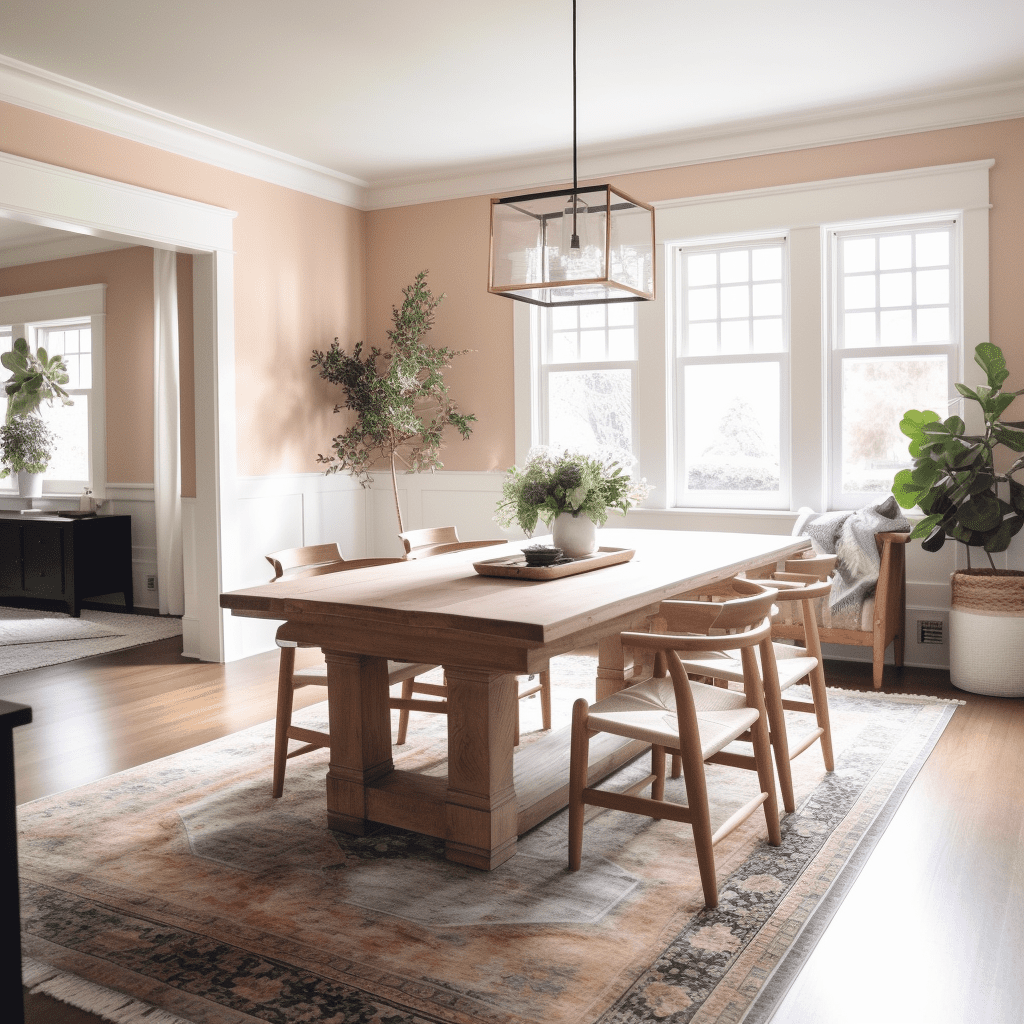
How Color Psychology Affects You and Your Guests
Your dining room color not only sets the style and tone for your room, but each color also has psychological and physical effects. Color psychology began in 1810 with W. Goeth’s, Theory of Color, where he began associating colors with emotions.
The field has since expanded with scientific studies on how each color not only triggers certain emotions, but also physiological effects on the body. We’ll discuss how each color affects us so you can make an informed decision tailored to your personal style and room goals.
Shades of red can elevate your heart rate, and raise your metabolism. Deep reds increase our appetite. Lighter pinks are seen as more gentle and feminine. Pink has made a major style comeback and is generally considered more of a neutral color now.
Oranges are touted as Nature’s antidepressant. Bold oranges are active and dynamic.Think accent wall in a gym. Earthy oranges convey a sense of warmth and security. Light oranges and peaches radiate happiness, and increase our desire to socialize and bond.
Yellows stimulate our brains, promote curiosity and logical thinking. Yellows encourage us to network and collaborate with others. Bold yellows can be harsh and agitating, causing anxiety and eye strain. Soft, buttery yellows and creams have a more gentle and welcoming feel.
Green colors remind us of nature, stimulate our pituitary gland, relax and relieve stress, and help with positive thinking. Light greens feel fresh and give a sense of renewal. Deep greens feel safe and luxurious.
Blue colors calm and relax you, but also suppress hunger since blue is very rarely seen in the colors of our food. Light blues feel open like the color of the sky. Deep blues evoke feelings of security and masculinity.
Purples spark creativity and introspection. Purples have both a calming and stimulating effect on us. Deep purples convey luxury and wealth, while lighter lavenders and lilacs convey a more feminine sensibility.
There are two types of neutrals, warm and cool. Warm neutrals range in the brown family and remind us of the Earth. They naturally calm us and provide a sense of structure and balance.
Cool neutrals fall in the gray family, and give a sense of blankness and safety. They provide a timeless background without making a bold statement.
Blacks create a sense of drama and masculinity. Blacks can be a powerful accent or pair with other colors for a high-contrast look. Entirely black rooms have become extremely popular in design, but need to be used thoughtfully depending on your lighting.
White reflects the most light and creates a sense of openness in the room. White exudes a feeling of freshness and cleanliness. White can also feel sterile and cold if not paired with other colors. Because of its light reflectiveness, white can be overwhelming in areas with abundant light. If you have a small space, low ceilings, or minimal natural light, white can make a room look bigger and brighter.
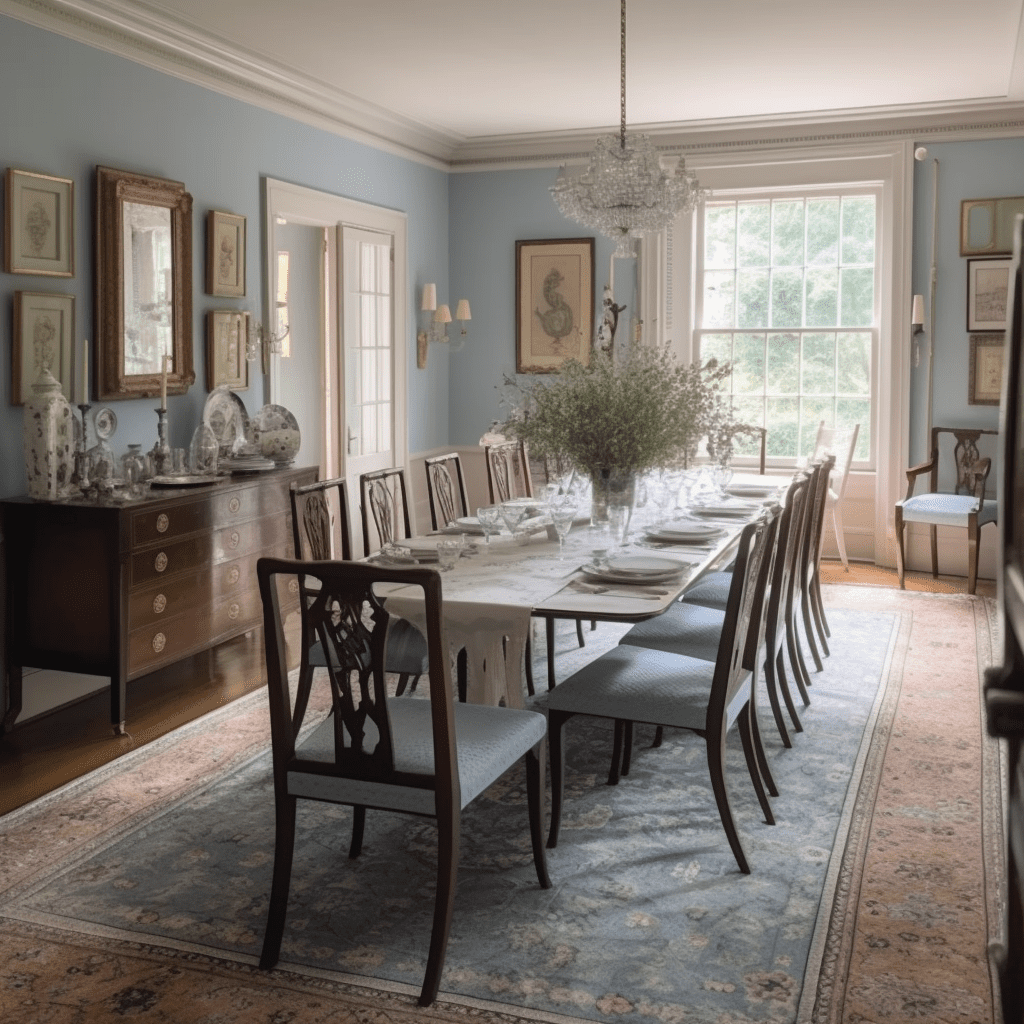
How To Pick The Right Color For Your Dining Room
Step 1 – Determine Your Dining Room Lighting
The first thing you need to think about is how much natural light you have in your room. Do you have one window, no windows, or several?
The second factor you need to consider is what direction your light is coming from. Light casts different warm or cool undertones depending on the direction.
Related Article: How Lighting Affects Your Paint Color And How To Fix It
North Facing Light
North-facing light will be grayer and have a cooling effect on your paint colors. Northern light will pick up on any blue undertones in your paint. They will make blue, grays, greens and some whites bluer, so make sure to color test and lean towards more warmer tones if you have a north-facing light source.
South Facing Light
South-facing light sources are warmer and will pick up more orange and yellow undertones in your paint colors. South-facing rooms don’t get a lot of morning light and can feel dim until they brighten in the afternoon. Balance out this extra bump of yellow with a neutral gray or cool tonal base in your paint.
East Facing Light
East-facing rooms have inconsistent lighting. They’re more bright and warm in the mornings, and cooler and gray by midday and in the evenings. Balance these rooms out with a warmer bedroom color that can look good in both scenarios.
West Facing Light
West-facing rooms typically begin with subtle light in the mornings, and graduate to more intense, warm light by the afternoon. Western lit rooms can handle both cool and warm colors, but less bold, softer tones will work better in the stronger afternoon light.
Indoor Dining Room Lighting
The third factor is your indoor lighting. Will you solely rely on your chandelier to light your room, or will you pair that with wall sconces or accent lamps?
The amount of natural light you have in your space will change how your color reads during the day, and the amount of indoor lighting will change how your color looks at night. We’re going to learn how to find a color that works in both day and night environments.
If you are starting fresh and need help figuring out how to pick the right size chandelier, check out our Dining Room Light Fixture Guide for a full tutorial with easy infographics to follow.
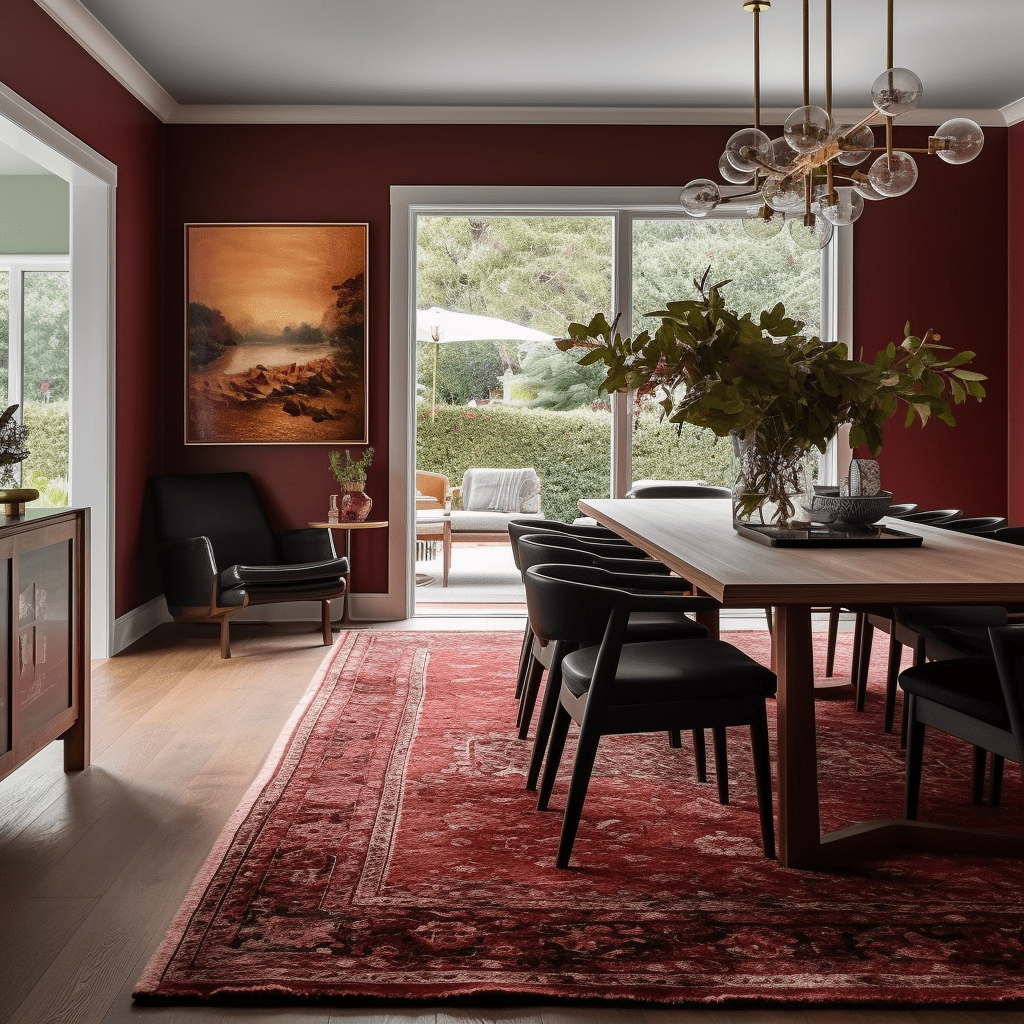
Consider Your Home
Dining rooms can be an exciting opportunity to go bold and dramatic. They can also be a room that exudes light and bright sophistication. Consider the existing style of your home and how your dining room will compliment and flow with the rest of your house.
Think about your trim and ceiling colors. Ceilings and trim are harder and more expensive to repaint. Find a color that works well with both of these elements to avoid clashing. If you have existing furniture, curtains or a rug, make sure your color options pair well with these pieces.
If you are starting fresh, or need inspiration, hop onto Pinterest for ideas, and pull photos from home decor magazines. The more images you can gather that speak to you, the clearer your vision will be.
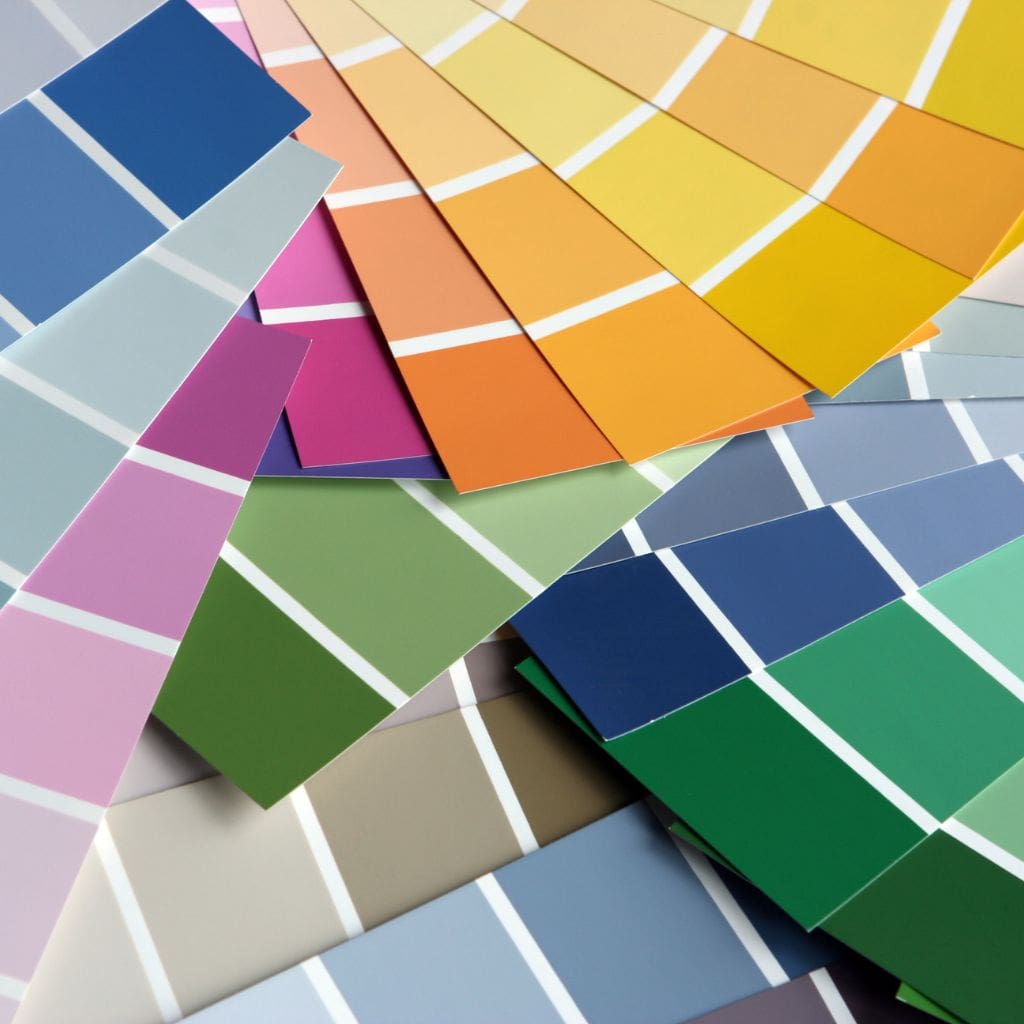
Choosing Paint Samples
Now that you know your lighting, and have an idea of what colors and style you like from gathering inspiration, you can sit down with a color deck, or visit your local hardware store and pull some color strips.
Paint strips show a single color formula in all its variations from dark to light. This means that all of the colors on the strip will have the same undertone. When selecting paint colors, make sure to look at the surrounding colors on the paint strip. The very bottom color will give you the best idea of what undertone the rest of the colors have.
Related Article: “Wall Color 101: How To Use A Paint Swatch Like A Pro”
What Are Color Undertones?
Every color rests on a spectrum. Colors can have either warm, or cool undertones. Warm undertones mean your color can look more red, pink, yellow, or orange when light hits it. Cool undertones mean your color can look more blue, purple, or gray when in shadow.
How To Use Color Strips To Find Your Perfect Color
By checking the darkest color on your paint strip, you can see if your color will lean more warm or cool. This is particularly helpful when choosing lighter colors.
Going back to the direction of light in the room, if you have North or East facing windows, you’ll want to choose a paint color that has warmer undertones to correct any blue or gray that the light casts. If you have South or Western direction light, you’ll want to select colors that have blue undertones to counteract the warmer yellows in the light.
Start by taping color strips to your dining room wall to get a feel for what each color will look like in your space. Now leave the room. That’s right. Walk out of the room for a couple of minutes. Go on, get.
You know when you’re trying to pick a perfume, they’ll have a jar of coffee beans to clear your smell senses? The same goes when looking at paint colors. If you’ve been staring at a hundred paint samples, your eyes will get tired. By walking out of the room, getting a quick snack or something to drink, you are “clearing” your eyes from color strain.
Now walk back into the room. What color immediately draws you first? What colors repel you? Pull off any colors that you don’t like.
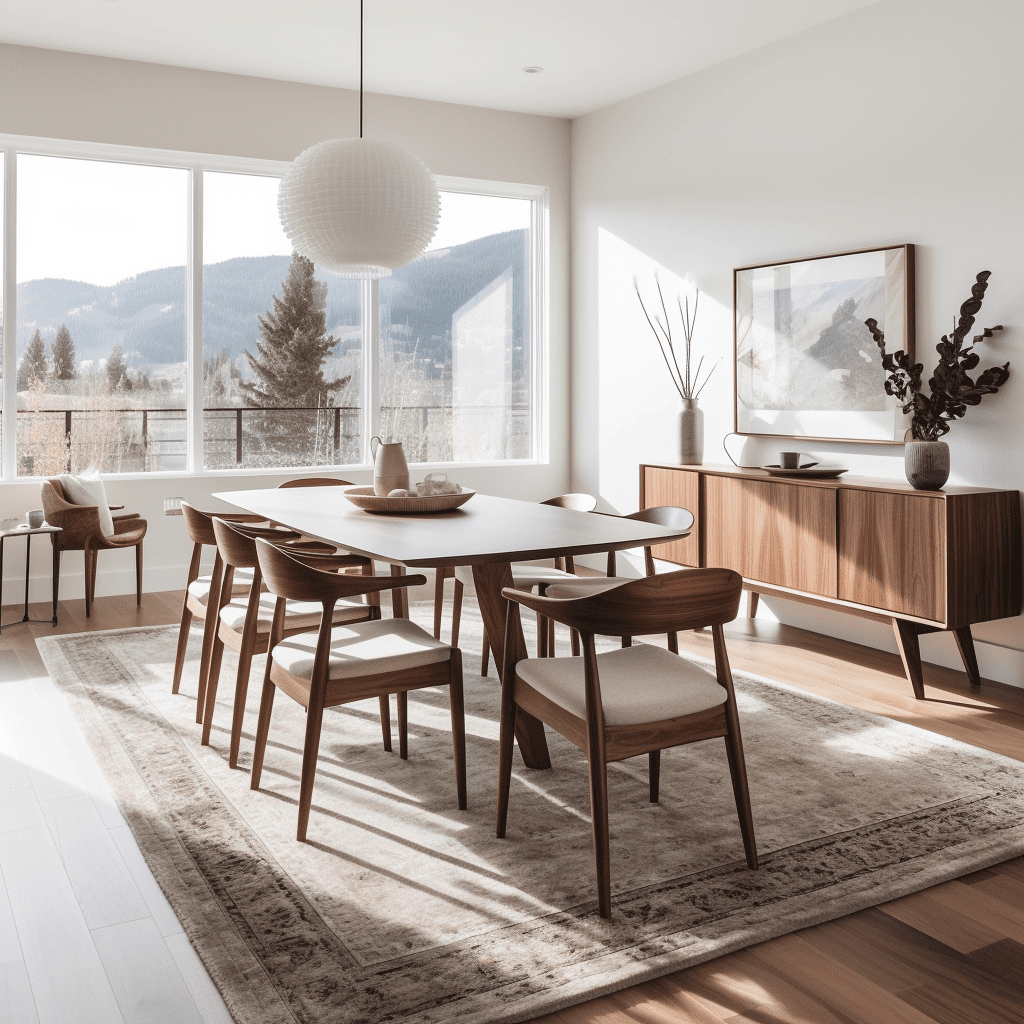
The Right Paint Sheen For Your Dining Room Color
To gloss, or not to gloss? Paint comes in several different sheens. Sheen is the amount of enamel mixed into the paint. Enamel makes the paint harder and less absorbent to oils in our hands, easier to clean, less resistant to stains, scratches, and scuffs.
The more sheen a paint has, the “harder” the paint is, and the more light it will reflect. Paint sheen options are flat, eggshell, satin, semi-gloss, or high gloss.
What Is Flat Paint?
Flat paint is essentially matte. Flat paint has no enamel added and does not reflect any light off of the wall surface.
Builders usually paint houses in flat paint because it is the most pigmented, covers wall blemishes well, and is the least expensive. Flat paint is best in low traffic areas. Most ceilings, closets, and garages are painted in flat paint.
Flat paint is not resistant to moisture, and should not be used in wet areas like bathrooms or kitchens.
The flat or matte look can have a velvety, modern feel to it, but it does not clean or scrub well. Because there is no enamel in the paint, the paint is essentially “open” and will absorb oils from fingerprints, stains, and scuff marks. If you have any blemishes on your wall, you cannot scrub the wall without creating a larger problem.
Side Note: You think you don’t touch your wall very much, until you have flat painted walls. It’s like having a glass table. The natural oils in your hands will show every little fingerprint, especially if you have children. It might not show immediately, but it does accumulate over time.
The solution to addressing any stains is to touch up with your original paint. If you run out of your original paint, take the paint can with you to your hardware store and have them match the formula. Have them do a test dollop of paint next to your original paint in the can. Let the test dollop dry first to make sure the new color is a match. If there needs to be any adjustments to the color, have your hardware store do the adjustments before you go home and paint your walls. This will save you so much time and work.
What Is Eggshell Paint?
Eggshell paint is my personal favorite. It has a low level of enamel added so you get the sophistication of a subtle soft, velvety texture, with the cleaning benefit of satin or semi-gloss. Eggshell paint can be wiped with a soft cloth, soap and water. It is not as scrubbable as satin or semi-gloss so go slow, and be gentle.
The downside of eggshell is that because it has a small amount of sheen to it, touch ups can be more noticeable. Eggshell paint is best used in medium to high traffic areas. A dining room, living room, bedroom or hallway is an excellent place for eggshell paint.
What Is Satin Paint?
Satin paint is one of the most used paint sheens. Satin paint has a medium gloss level and is easily cleaned. Satin paint looks amazing in more formal areas, and is a great choice for dining rooms.
Satin paint will reflect more light than eggshell. This means that it will highlight any imperfections in your wall. If you have a textured wall, I would recommend going with a flat or eggshell so the light doesn’t catch on the surface texture.
Because satin has a medium-level of enamel added, it is easier to wipe off any stains or scuffs and is great for high traffic areas. But as with eggshell, it can be harder to touch up. This is because your wall very slightly loses sheen as time goes by, and is exposed to light. If you touch up with new paint, the sheen is fresh and the touch up spot will be brighter than the rest of the wall. Luckily, I have a pro tip to compensate for this.
What Is Semi-Gloss Paint?
Semi-gloss paint is best used on floor and ceiling trim, doors and door casings. Semi-gloss has a high level of enamel so it is harder, stain and scuff resistant, and easy to wipe clean. Why? We don’t notice it, but we doors and door trim accumulate dirt and oils from our hands. Feet, furniture, and vacuum cleaners hit the baseboards and leave marks.
Semi-gloss is moisture resistant, so you can use it wet areas, bathrooms, kitchens, and high traffic areas. But the same advice applies if you have a textured wall. A semi-gloss will show any wall imperfections and is best used on a very smooth wall surface or trim.
What Is High Gloss Paint?
Go big or go home, right? High gloss is as close as you can get to a straight up lacquer enamel. High gloss has the most reflective surface and can look like glass.
High gloss has become a trend in dining rooms to create a stunning jewel box effect. If you choose to do a high gloss in your dining room, make sure you do everything in high gloss, including the ceiling and trim.
If you have a large window, or abundant natural light, any color you choose will look lighter and brighter due to the highly reflective surface. Whites in particular can become blinding if not mitigated by curtains or shutters.
High gloss paint will also show any and all wall imperfections so be sure that your walls are completely smooth and ready for a high gloss finish. Prep work and sanding with a fine grit sandpaper over your entire room, trim, and ceiling will save you major heartache later. You do not want to find a bad spot in your wall that will have to be sanded then completely repainted. Trust me on this one.
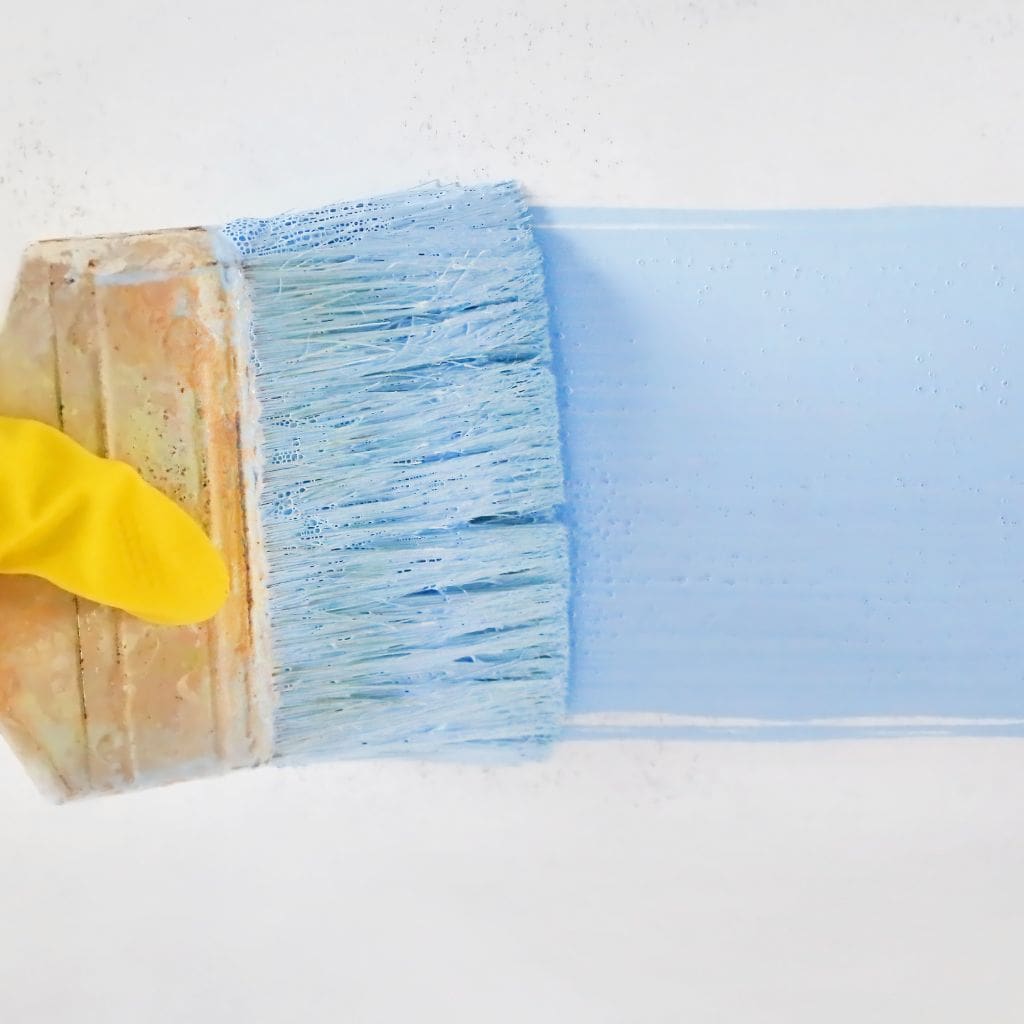
How To Successfully Touch Up Paint
How do you address sheen differences in touch ups? You can repaint the whole wall. No thanks. Or you can get a sample quart of your same color in a flat finish, and mix a small amount in with your satin paint. This will knock down the sheen just a bit so your touch up spot isn’t as noticeable. Please, do a test spot in an inconspicuous place first to make sure you have your mixture right before diving in.
If you are really struggling with matching the sheen, you can get a matte glaze. A glaze is a translucent paint that can come in matte, satin, semi-gloss, or gloss to change the sheen of an existing paint.
Paint your touch up, then use a tiny amount of matte glaze over your touch up. Apply a small dot of the glaze with a brush in the center of your touch up. Do not put it all over your touch up. Pat the glaze with a slightly damp paper towel from the center towards the outer edges of your touch up. Delicacy is key here so go slow, do it once, and then let it dry. Most glazes have an open dry time of about an hour. Allowing it to dry completely before trying to make any adjustments will give you an accurate view of your touch up.
Most paint stores will have a specialty section that has more nuanced fine art supplies like glazes. My personal favorite is the Modern Masters Dead Flat Varnish Low VOC. I have used this glaze for years and it has never failed me.
Home Depot has a glaze, Americana Decor Ultra Matte Varnish. I have not used this product, so I cannot personally endorse it, but most glazes work generally the same. Again, the key with touch ups is to go slow, keep the touch up area as small as possible, let it dry completely, and check the spot at different times of the day to make sure it looks correct. It’s only paint. If your first touch up doesn’t work, you can try a different mixture to correct it.
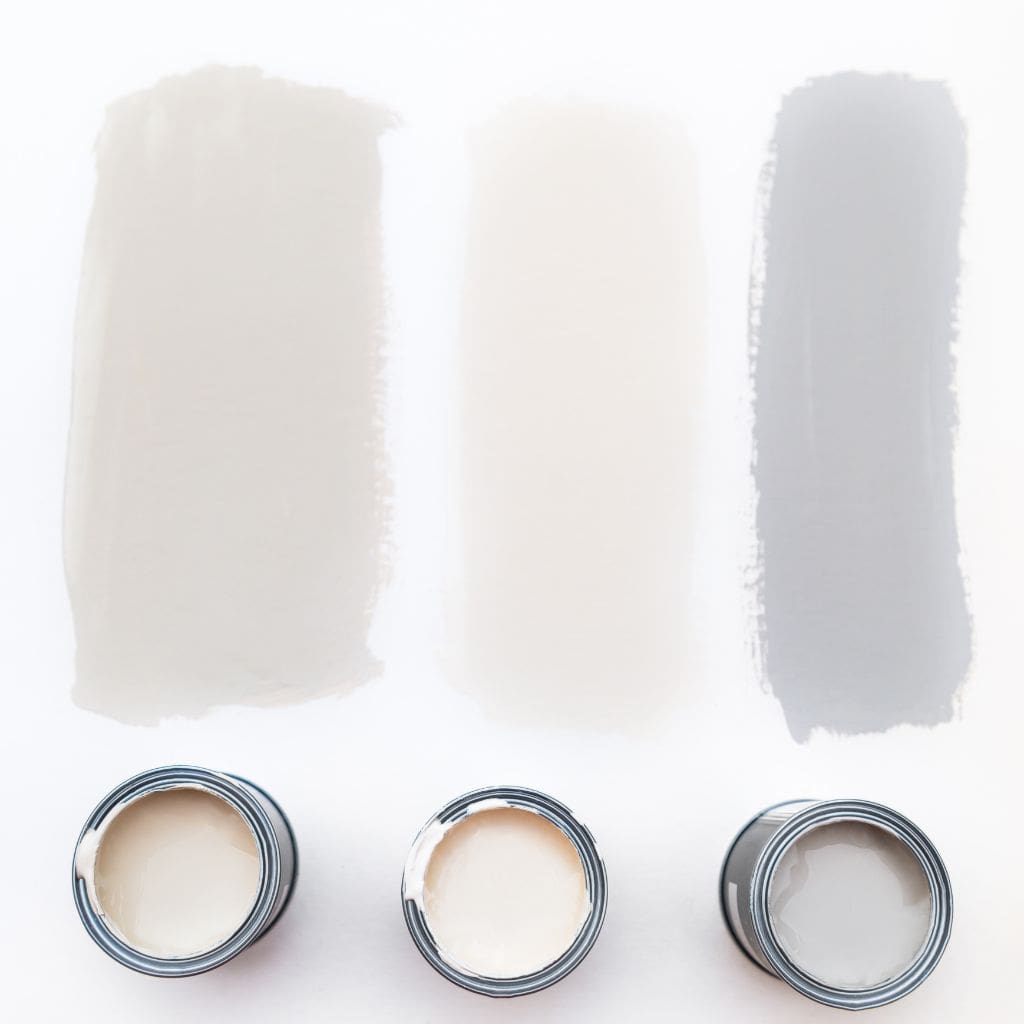
Sample Twice, Paint Once
Okay, you’ve narrowed down your paint samples to 2-3 options and you have an idea on what sheen you want. Time to hit the hardware store. Many hardware stores offer paint sample sizes instead of full quarts at a lower cost. Ask your hardware store for a sample size of your top options.
Sample sizes usually only come in a flat or satin finish. Ask your hardware store if they can make a sample size in the sheen you want. You might have to buy a regular quart if they don’t offer a sample size in your sheen.
Here’s one of my best paint pro tips. Once you have your sample quarts in hand, march home and pull out a paint brush. Paint a good size paint swatch, I’m talking at least a 12” square, bonus points for bigger swatches if you can, on all four walls.
If you have a wall that gets direct sunlight from a window, paint two swatches on that wall, one in the area of direct sunlight, and one next to it in shadow.
Here is the critical part. You’ll want to check your paint swatches in the morning, the afternoon, and in the evening after sunset when it’s dark outside.
Why?
Morning light is cooler, think more blue or gray, than midday and afternoon sunlight. Midday and afternoon sunlight casts a warmer tone than when it’s dark outside. Your color will change depending on the time of day and amount of light it’s exposed to.
Take time to look at each color closely during these three periods of the day. How does your color change?
If it looks gray, purple, or blue, you have a cool undertone in your paint and need to adjust to a warmer based color. If your color looks pink, yellow, or orange, you have a warm undertone in your paint and need to modify it to a cooler based color. If your color looks great on all four walls, at all three times of day, congratulations, you’ve found your perfect dining room color!
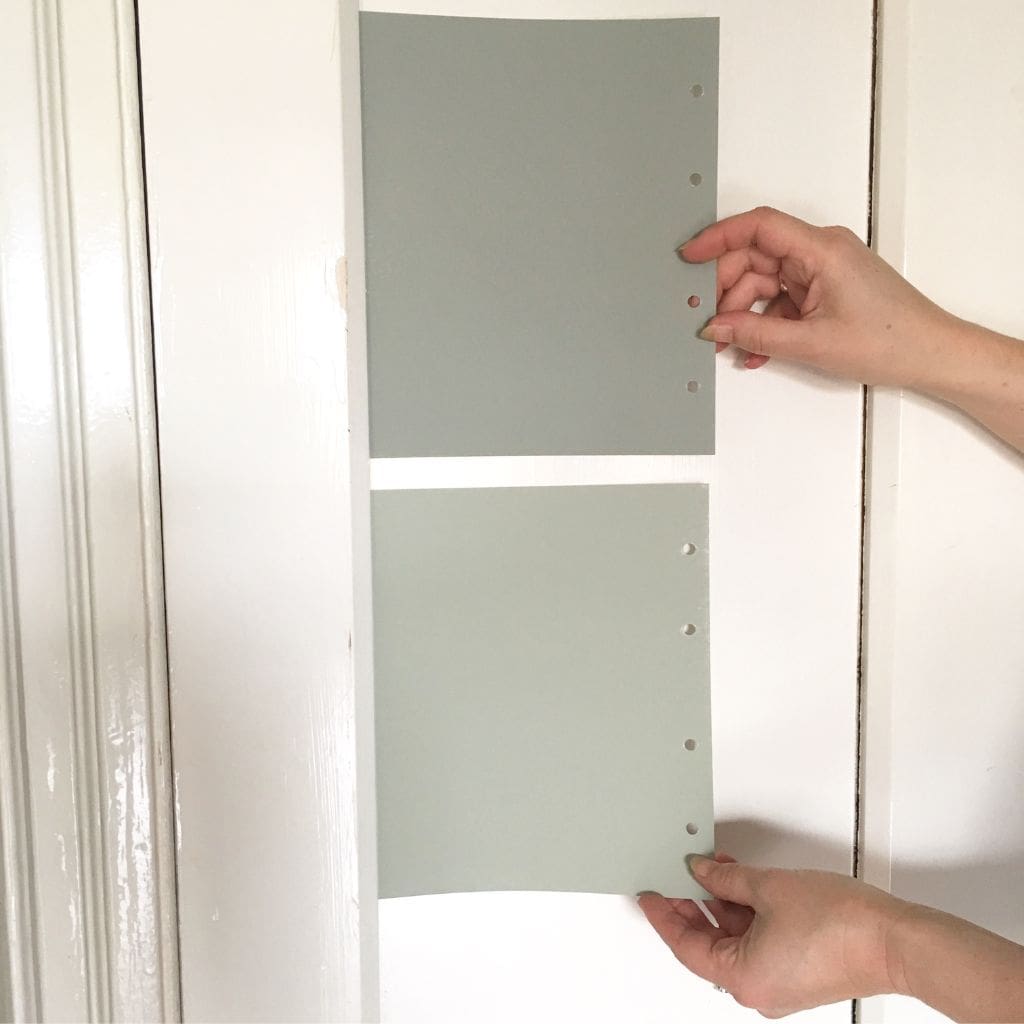
Color Correcting Like A Pro
If you need to color correct to a cooler or warmer undertone, try looking at the paint swatch before and after the color you’re testing. Remember the darker colors on the swatch will show what undertone the other colors on the paint strip have. This will help guide you to a more accurate color choice.
If you’re struggling to understand the undertone in your paint, grab a friend! Or take your paint strip to your hardware store and ask one of the paint employees to help gauge what the undertone is. Compare other paint strips to yours to show any differences. It always makes the process easier if you ask for help.
This process might seem tedious, but it is way less time consuming and costly then painting your room a color you thought you’d love, only to discover that it looks purple at night, or turns pink or yellow midday, and end up having to repaint your entire room. This process has been tried and tested by professionals for years, and trust me, it’s worth it.
Conclusion
We have walked through a ton of information. Hopefully you are now armed with some powerful paint knowledge!
The best way to pick your perfect dining room color is to know your lighting, understand the undertone in your paint, sample on all four walls, check the color morning, noon, and night, and adjust if needed.
If you need help picking a paint color, I’m here to help! Email me at Nicole@ColorCaravan.com and we will figure out your ideal dining room color together. You don’t have to do this alone!
Be sure to sign up for my weekly newsletter for more behind-the-scene interior design pro tips so you can learn how to transform your home into the house of your dreams.
About The Author
Nicole is an interior designer, artist, and writer. She is passionate about sharing her knowledge of color, interiors, and design.
Nicole offers in-person and virtual design services. She is the owner of Color Caravan, a line of hand-painted wallpapers, textiles, and home decor.


